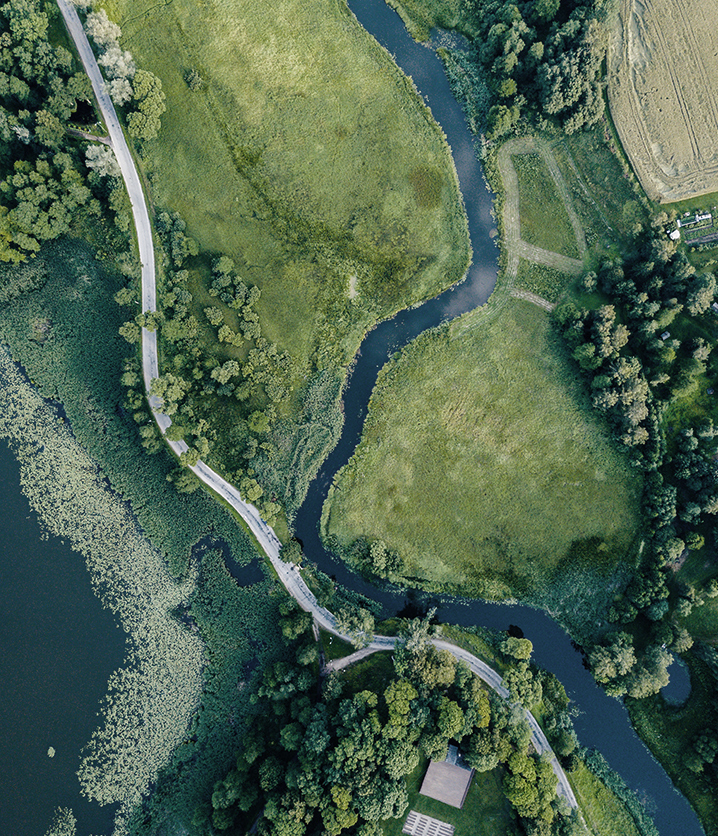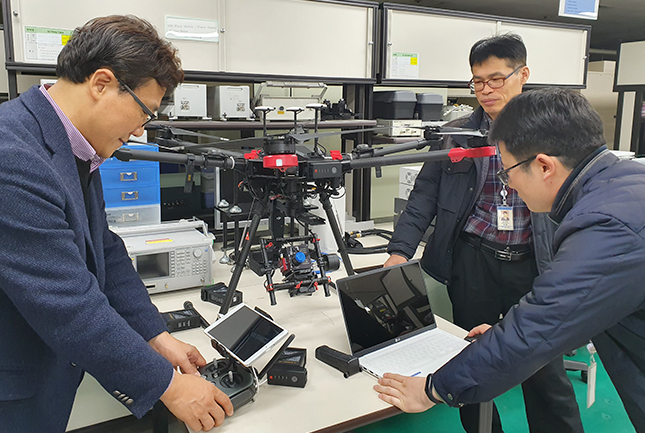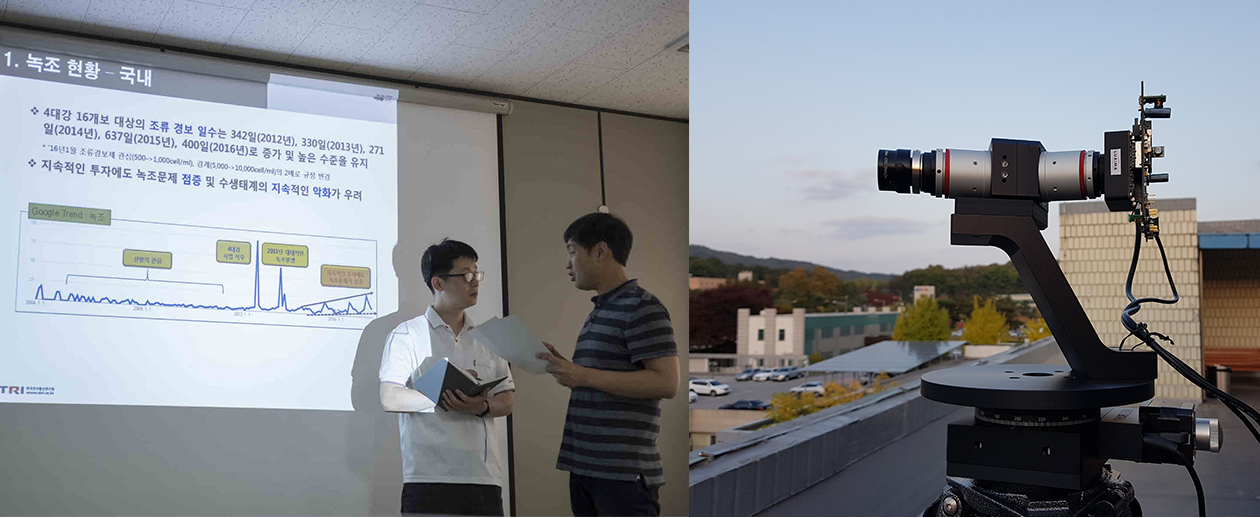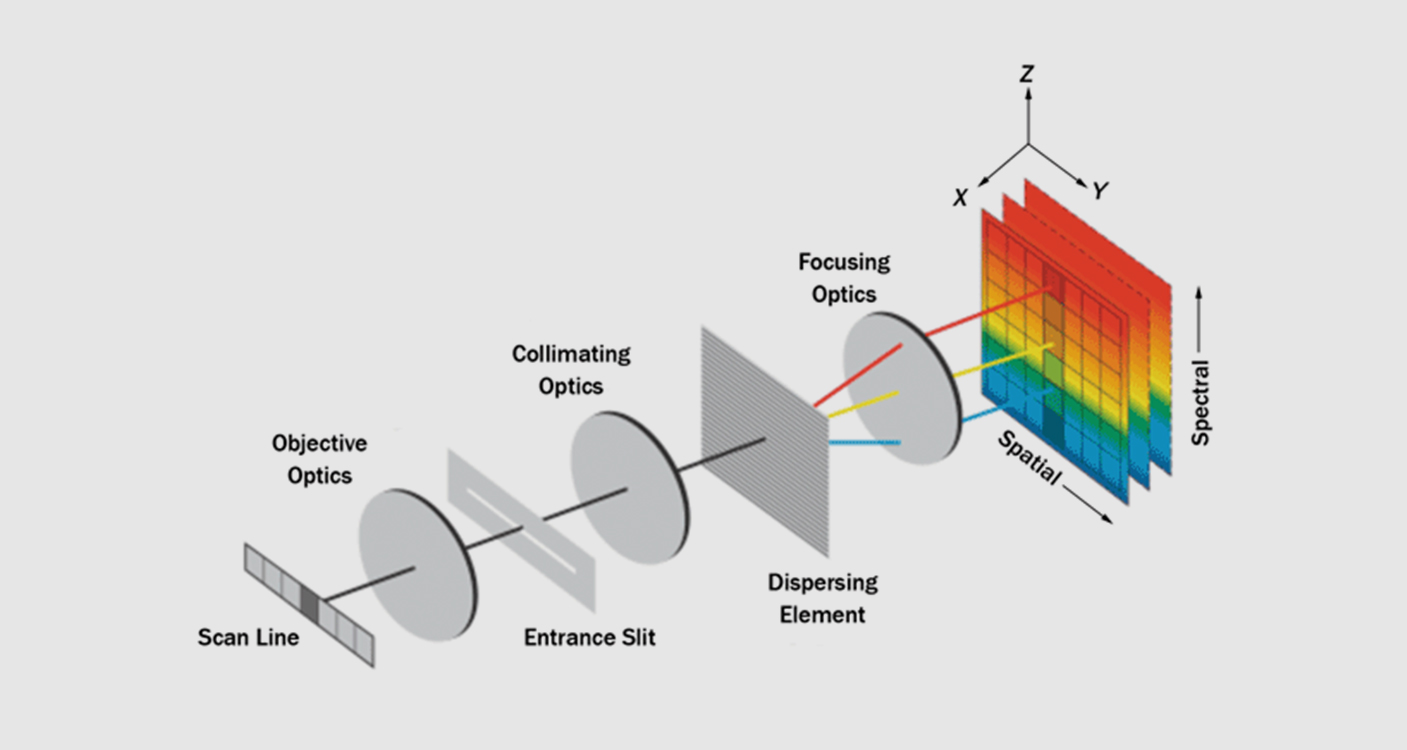VOL.58
January 2020


Special — ETRI developed hyperspectral technology to predict algal blooms
ETRI developed hyperspectral
technology to predict
algal blooms
1) A hyperspectral camera built in a drone to explore entire remote rivers and streams
2) Prediction of algal bloom expansion by constructing the big data for water quality and the AI analysis
3)The goal of 90% accuracy by enhancing the analysis performance and smaller and localized sensors


Prediction of algal bloom expansion with AI analysis
The Electronics and Telecommunications Research Institute(ETRI) research team has developed the technology for analyzing remote water quality with drones and using AI to predict the level of algal bloom. The technology is expected to reduce public anxiety about algal blooms that reoccur each summer and help manage drinking water safely.
ETRI announced it successfully measured and predicted algal blooms in a remote Lake with a hyperspectral camera built in a drone, The research was published in the journal Remote Sensing of Environment’.
Algal blooms have been observed in many rivers and coastal waters, where water flow is slow or stagnant If the algal bloom growth reaches a certain point, it expands exponentially making it difficult to manage. Thus, it’s critical to accurately monitor and predict algal activity.
In the past, it took two days to collect samples and analyze water quality. Moreover, the process was cumbersome as it required physical site visits, making it difficult to respond quickly before the algae bloom spread.
The technology developed by ETRI uses drones to remotely examine water bodies, making it easier to study blue-gree algae status, including migration, spread, and distribution in rivers or steams. Compared to satellites or aircraft drones can monitor the water more easily at low costs and high resolution.
The acquired big data is then quickly analyzed with AI which helps predict where the green macro-algae will bloom after 7 days, making it more effective to respond proactively.

Rivers and streams explored with
a hyperspectral camera
A hyperspectral sensor is central to the system’s success. While conventional images divide light into three prime colors (RGB), the hyperspectral technology can divide the visible and near-infrared regions into 200 or more colors. Thus, The technology can classify the components of an object in more detail and can be applied widely in the military, environment, medicine, healthcare, and other areas.
The hyperspectral camera in a drone can easily indicate whether the green algae level is at “Attention”, “Warning”, or “Outbreak”. It uses the light spectrum of blue-green algae to check the current status digitally in real time.
ETRI installed a fixed buoy with a sensor at two points on Daechung Reservoir in June and have operated a water drone with mobile sensors to examine the water quality.
The data obtained from explorations were analyzed by a consortium of a team led by Prof. Cho Gyeong-hwa at UNIST and the team led by Prof. Park Yong-eun at Konkuk University, which collected samples from the sites, extracted green color, and compared with the absorbance measurement results.

“We have the goal of achieving the world’s best level of accuracy in algae prediction. We plan to make it possible to track the growth of blue-green algae and facilitate early response to prevent” said Dr. Yong-Hwan Kwon, the ETRI project manager.
ETRI has used the hyperspectral camera drone to examine the water quality of Daechung Reservoir in South Korea. The research team next plans to construct a real-time monitoring map of algal blooms in the reservoir. The objective includes a study on automating the process of exploration, data collection, input, and analysis after establishing the optimal moving path of the drone.
The research team has the goal of increasing the accuracy of the algae prediction to 90% or higher by enhancing the analysis performance. They also plan to reduce the weight and size of the hyperspectral sensor by 2022.
This project was carried out as part of the “Spatiotemporal AI-Based Green Tide Prediction Technology Based on Directive Water Quality Sensor and Hyperspectral Images” project, which is the ETRI supported program of the social problem-solving project sponsored by the Ministry of Science and ICT. ETRI has applied for eight patents in relation to this technology and plans to transfer the technology to hyperspectral camera manufacturers in the future.



